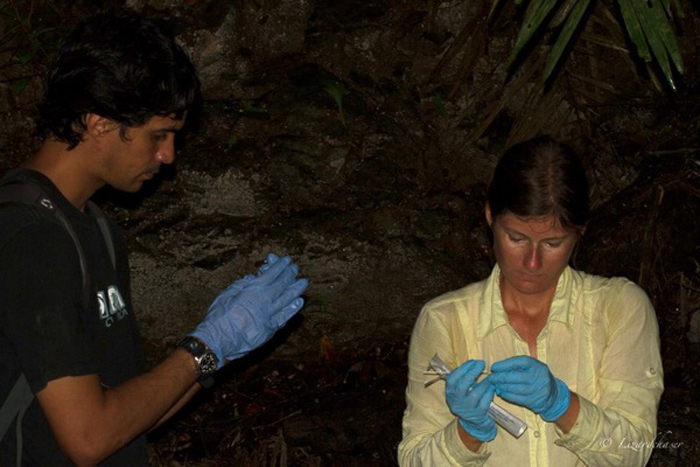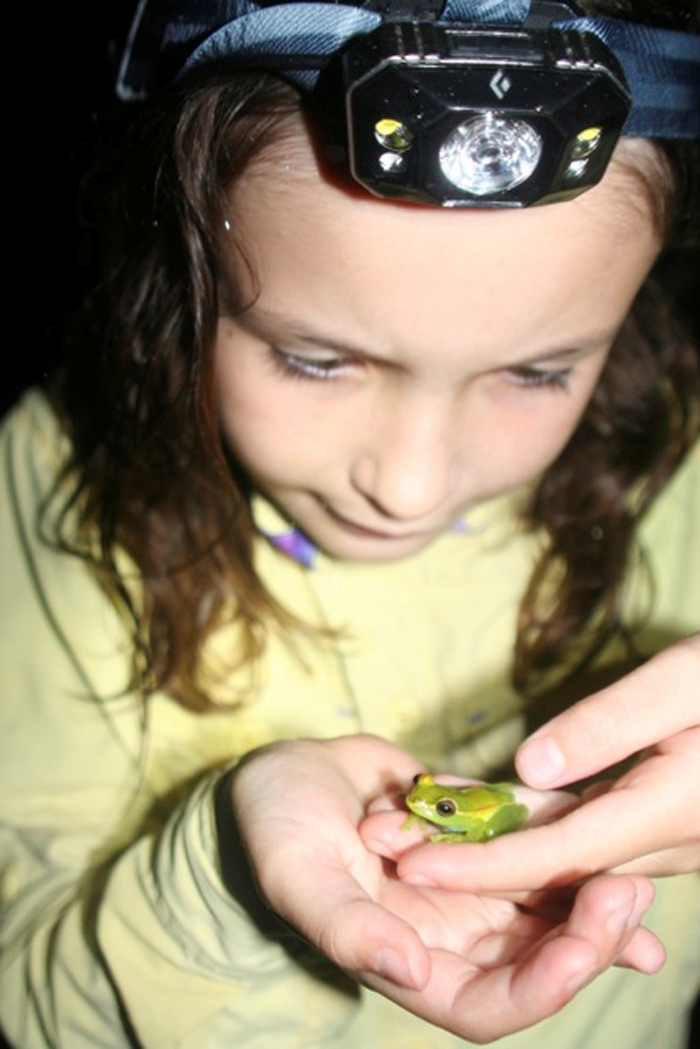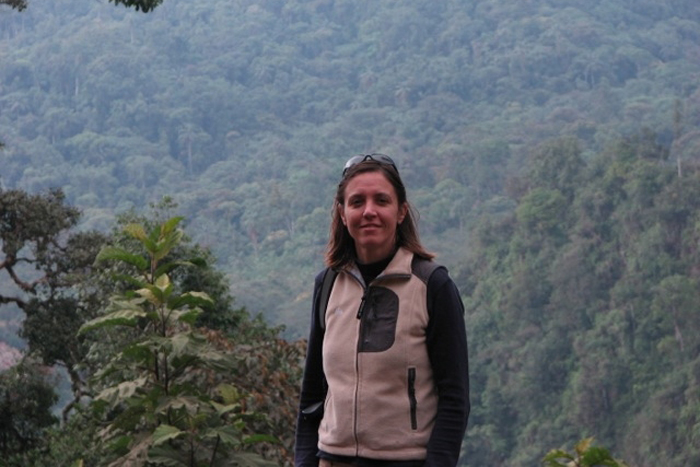Predicting How Biodiversity Affects Disease

This Behind the Scenes article was provided to Live Science in partnership with the National Science Foundation.
In ecology, as in many scientific fields, researchers like to develop general rules to explain why certain things happen in nature, and to make predictions. The reality, however, often is more complicated. For example, when trying to understand "communities" of species that make up biological systems, general rules don't always apply.
The Uniqueness of Communities
"The predictive framework often has to be system specific," says Lisa Belden, a community ecologist who primarily studies disease ecology. "If we are going to make predictions about what's going to happen in a natural system as we lose species, we need to understand the natural history of the organisms that live there, the roles of the individual species within the community, and the way those species interact. Understanding each system is important." [Images: Endangered Species of the 'Red List' ]
Belden, associate professor of biological sciences at Virginia Polytechnic Institute and State University (Virginia Tech), is researching two such specific systems related to the ecological interactions that influence disease. The goal is to better understand how changes in biodiversity , in particular, species loss, effect disease outcome.
Impacts on People
These are especially important in terms of disease because "we are seeing more and more zoonotic disease outbreaks every year, where pathogens move from other animals into humans" Belden says. "People are saying: where did this come from? More people are interacting with wildlife, and if we don't understand the wildlife component, we can't understand the human component — we won't be able to put those pieces together in order to control these pathogens and limit their impact on people."
Get the world’s most fascinating discoveries delivered straight to your inbox.
One of her projects involves the complicated life cycle of freshwater trematodes, a diverse set of parasitic flatworms that typically infect three hosts — sometimes including humans — as part of their reproductive life cycles. Her second study is looking at the role of symbiotic skin microbes in preventing amphibian infection by chytrid , a lethalfungus that has driven many amphibian populations to extinction.
The National Science Foundation (NSF) is funding both projects with grants totaling $1.5 million.
The Importance of Interactions
"Historically, we've viewed disease from thinking, primarily, that there is one organism, a pathogen or parasite, that causes disease and a host that gets it, particularly from a human perspective," she says. "But in recent times, we've come to realize that interactions around the host and the pathogen are more complicated, and that environmental factors also can be important."
Both studies ask how "community structure" effects the function of the biological system, with community structure defined as the relative abundances of the different species in the system. "As you start taking species out of communities, what happens to the function of the communities?" she says.
With amphibians, for example, "we already know that some of these skin bacteria do a good job of producing anti-fungal compounds," she says. "These are naturally occurring bacteria on the amphibians, but we don't know how they get them. We don't know whether they are derived from the environment, or whether they are passed from frog to frog. What we certainly do know is that these bacteria produce antifungal compounds and can inhibit the growth of the chytrid fungus."
Thus, in studying these bacterial communities, "we are interested in disease resistance function," she adds. "Is the function linked to the presence of a particular [bacterial] species on the skin of the frog? What happens if you lose the species? Do you lose the function?"
How Does Diversity Help?
Alternatively, diversity in and of itself could be protective, that is, "the fact that you have a lot of species present and interacting on the skin, or the fact that they take up all the space and block other things from coming in," she says. "In that case, what would matter is the overall loss of species — not the loss of any particular species. It could be that these antifungal compounds are produced by many species."
Interestingly, her research parallels growing scientific interest in the human microbiome, where studies are examining how naturally occurring bacteria effect numerous aspects of human health. "The microbiome is bringing in this new age of how we think about medicine," she says. "It's interesting how all this research is coming together, and how we are starting to think of human medicine in this broader framework of how species interact with one another, and the role of these microbial passengers."
Experimenting to Identify Interactions
Her experiments involve exposing three different species of amphibians to the fungus after the researchers have surveyed the bacterial populations on their skin. "The idea is to see what happens, and track both the structure and function of those microbial communities," she says. Ultimately, "one of the things we are hoping to do at some point is treat vulnerable amphibians with probiotics to have a better defense against chytrid," she says.
With the flatworms, Belden's team is looking at similar questions relating to how different species within the complex communities where they live have an impact on their life cycles, for instance, what happens when a predator consumes potential hosts in the parasite life cycle.
"They have three hosts, and all must be present for the parasite to complete its life cycle," she explains. "First there is the adult worm, which reproduces in a vertebrate intestine — often a muskrat or duck for the parasites we study. The eggs are in feces. Then they have to go into an aquatic snail, where they reproduce asexually. They consume the gonads of the snail so the snail cannot reproduce — they take over the snail, like the invasion of the body snatchers. Then there is another free-living parasite stage that must infect another host — another snail, or a tadpole — where they form a little cyst and sit there until the snail, or tadpole, is consumed by another muskrat or a duck. Then they become adult worms, and it starts all over again."
Belden is interested in what happens when predators are present that prefer to consume one type of intermediate host, or what happens when the abundance of available hosts change in the system, which is likely to occur as overall biodiversity declines.
"How do these species interactions influence disease outcomes for subsequent hosts? " she says. "These interactions and the transmission of the parasite from one host to the next, depends on who is in the system. Every predator and potential host species might have different impacts on this complex life cycle, so understanding ecological interactions and context is important for being able to predict how changes to systems, like biodiversity loss, are going to alter who gets infected and with how many parasites."
Mimicking Nature
Her research team is raising adult flatworms, mimicking natural conditions, and then changing those conditions to see what happens.
"We can actually work with all the life stages, and can manipulate the life cycle in experiments," she says. "We are using cattle watering tanks, setting up 1,000 liter ponds outside that are big enough to get realistic densities of organisms. We can set up controls, and do real experiments, such as adding in predators or manipulating the density of the hosts. We expect that as biodiversity declines, there will be changes in the abundance of the species that are left."
Big Challenges Ahead
Beyond disease ecology, however, she believes that the issue of biodiversity loss will have an overarching impact on almost all systems that society depends upon.
"There are so many concurrent changes that we are trying to understand," she says, citing climate change and pollution as examples. " Understanding these natural systems and the species that live in them, and the roles and interactions of those species, is really important as we confront the challenges of biodiversity loss and climate change. These are big challenges, and if we want to mitigate the impacts, we have to understand what is changing. We can't do that unless we understand the systems."
Editor's Note: The researchers depicted in Behind the Scenes articles have been supported by the National Science Foundation, the federal agency charged with funding basic research and education across all fields of science and engineering. Any opinions, findings, and conclusions or recommendations expressed in this material are those of the author and do not necessarily reflect the views of the National Science Foundation. See the Behind the Scenes Archive.





